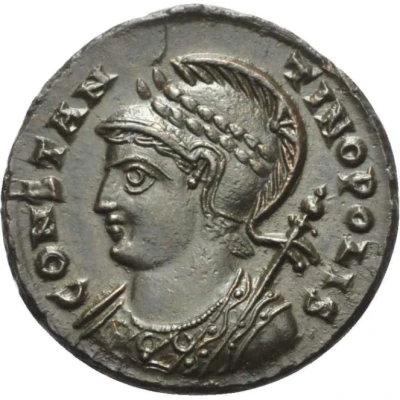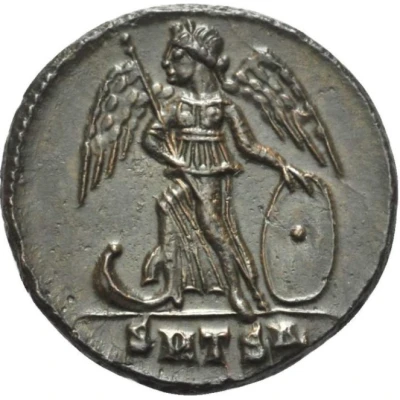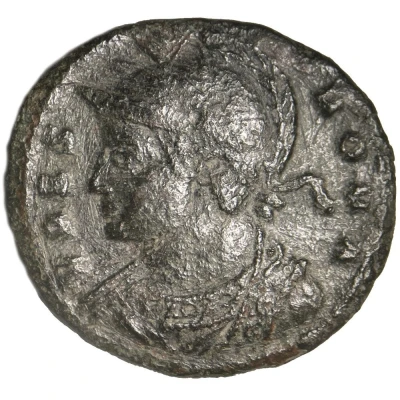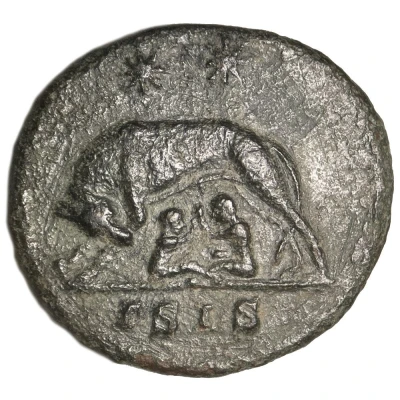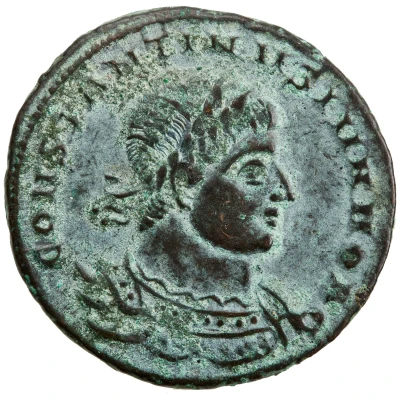
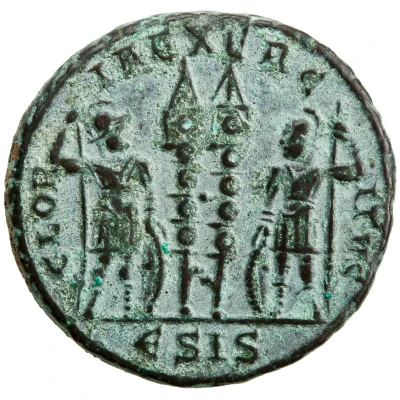

© American Numismatic Society (ANS)
Nummus - Constantine II as Caesar GLORIA EXERCITVS; Siscia
| Bronze | 2.38 g | 18.21 mm |
| Issuer | Rome › Roman Empire (27 BC - 395 AD) |
|---|---|
| Emperor | Constantine I (Flavius Valerius Constantinus) (306-337) |
| Type | Standard circulation coin |
| Years | 330-333 |
| Value | Nummus (1⁄7200) |
| Currency | Solidus, Reform of Constantine (AD 310/324 – 395) |
| Composition | Bronze |
| Weight | 2.38 g |
| Diameter | 18.21 mm |
| Thickness | 1 mm |
| Shape | Round (irregular) |
| Technique | Hammered |
| Orientation | Variable alignment ↺ |
| Demonetized | Yes |
| Updated | 2024-10-05 |
| Numista | N#371372 |
|---|---|
| Rarity index | 91% |
Reverse
Two soldiers holding shield and spear, Two standards with 6 circles between them. Mintmark and officina in exergue
Script: Latin
Lettering: GLOR-IA EXER-CITVS
Unabridged legend: GLORIA EXERCITVS
Translation: the glory of the army.
Interesting fact
One interesting fact about this coin is that it features the image of Constantine II as Caesar, which is significant because Constantine II was the son of Constantine the Great, who was the first Christian Roman Emperor and played a major role in establishing Christianity as the dominant religion of the Roman Empire. This coin was minted during Constantine II's reign as Caesar, which lasted from 330 to 333 AD, and it highlights the importance of Christianity during this time period. Additionally, the coin's inscription, "GLORIA EXERCITVS," which means "glory of the army," suggests that the Roman military played a significant role in the spread of Christianity throughout the empire.
